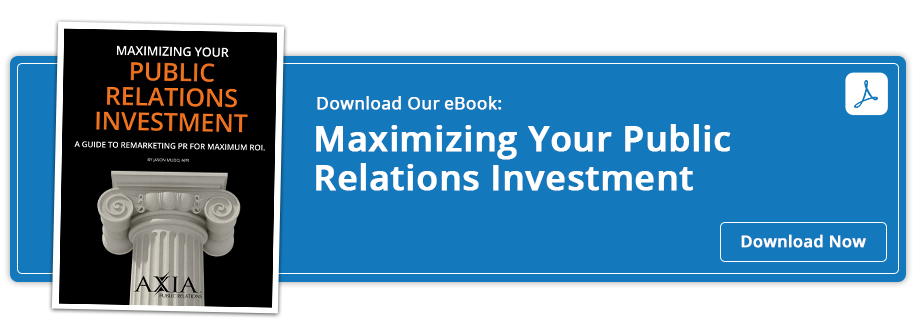 Enhance customer relationships and control communications with key messages for your company
Enhance customer relationships and control communications with key messages for your company
Suppose you find yourself in an elevator with an important stakeholder in your industry or city. Surprisingly, he notices your company logo on something you’re carrying and asks you to tell him about your company. What will you say?
If you’ve developed key messages about your company, the above situation shouldn’t be stressful. If you haven’t created such messages, enlist a public relations firm for help.
The importance of developing key messages
Don’t you wish you could control what people hear about your company? When it counts, you don’t want to be stuck repeating some bland tagline such as, “We do more with less.”
By developing key messages, you gain some control over how the public perceives your company. The more you deliver key messages, the more they’ll become the driving force behind everything you do and a representation of your brand.
When you instantly know what you want to say and how you want to say it, you quickly differentiate yourself from the competition, demonstrate your value to key stakeholders and easily communicate with journalists. Key messages:
- Improve consistency, accuracy and stability in your communications.
- Focus your thoughts when speaking or writing to ensure that everyone understands what your company is all about.
- Give direction to major company elements, such as your website, e-books, blogs, sales materials, landing pages and social media posts.
- Get everyone in your organization rowing together, so there is no confusion or chance to say the wrong thing when speaking to customers, stakeholders or during media interviews.
The following is a guide to creating effective key messages
- Each statement you create should be less than three sentences.
Additionally, the message should be simple and effortlessly communicated in the time it takes to ride an elevator. Make sure messages have the information your audience needs to know without using legal-speak, confusing terminology or advertising slogans.
- Always think about your values, mission, branding statements and taglines when developing your key messages. Your messages must support these overall goals.
- Ascertain which words and phrases you want people to associate with your brand. You may want terms like dependability, pioneering or ingenuity.
- Analyze your choices to make sure you aren’t using the same messages as your competitors.
- Remember to focus on benefits your company provides, not product features.
Also, keep it conversational, so that when spoken, it sounds natural and true. To demonstrate, here is an example from Valspar, maker of paints and coatings. The company’s key messages focus on reliability, innovation, performance, expertise and integrity. Under innovation it states, “Valspar is committed to helping customers meet their most pressing challenges.” Supporting facts include, “Counsel customers on safe use, transportation and disposal of products.”
- You should be able to back up your key messages with distinctive, fundamental facts about your business.
For example, instead of saying, “Our company is the best in customer service,” you should say, “Our company has consistently high rankings in national surveys for the exceptional attention we give to each and every client.”
- Hire a PR agency to help you.
Key messages should be fluid, persuasive and should motivate your audience to action. They also take patience and time to develop. With so much riding on your messages, it’s best to put them in the hands of communications experts.
At Axia Public Relations, we know that you only have a few seconds to capture the attention of your target audience and make an impression. We’ll help you develop your key messages to take maximum advantage of those precious seconds. To learn more, contact us or download our e-book Maximizing Your Public Relations Investment today.
 Lisa Goldsberry is a blogger for Axia Public Relations with more than 15 years of public relations experience. She specializes in business and technology PR. Lisa has worked for Axia since December 2013. Learn more about Lisa Goldsberry. Connect with Axia on Twitter @axiapr or tell us what you think in the comments below.
Lisa Goldsberry is a blogger for Axia Public Relations with more than 15 years of public relations experience. She specializes in business and technology PR. Lisa has worked for Axia since December 2013. Learn more about Lisa Goldsberry. Connect with Axia on Twitter @axiapr or tell us what you think in the comments below.
Featured image credit: 123rf.com
Topics: public relations, corporate communications, shared media


Comment on This Article